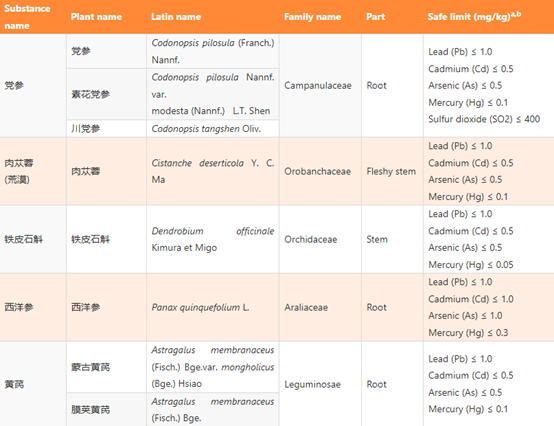On November 17, 2023, the NHC announced to update the Catalogue of Substances Traditionally Considered as Both Food and Chinese Medicine by adding nine new substances. Details are as follows:


Notes:
a Lead, cadmium, arsenic, mercury, and sulfur dioxide shall be measured according to the methods specified in GB 5009.12, GB 5009.15, GB 5009.11, GB 5009.17, and GB 5009.34, respectively. The pesticide limit shall comply with the relevant regulations of the Ministry of Agriculture and Rural Affairs;
b The limit value is determined based on dry products. While for fresh products, the limit value shall be translated based on the limit value of dry products by considering the moisture.
In Chinese traditional dietary culture, certain Chinese medicinal herbs have long been consumed as food ingredients. These herbs are included in China's Catalogue of Substances Traditionally Considered as Both Food and Chinese Medicine. Notably, the nine new substances announced were initially added to the Catalogue as pilots in 2020 and have now been officially included. Up to now, China has approved 102 substances of this nature.
Consumers are recommended to intake these nine substances in moderation, following traditional methods, which typically involve crushing, slicing, pressing, frying, boiling, and brewing of food raw materials. However, specific populations are not recommended to consume these substances, such as infants, pregnant women, and lactating women. When these substances are used as raw materials for health food, they should be managed in accordance with the relevant regulations for health food. Similarly, if they are utilized as traditional Chinese medicine, they should be managed in accordance with the applicable regulations for traditional Chinese medicine.
Source: NHC & Chemlinked
Note: This article is compiled by Antion. Please indicate the source for reprint.